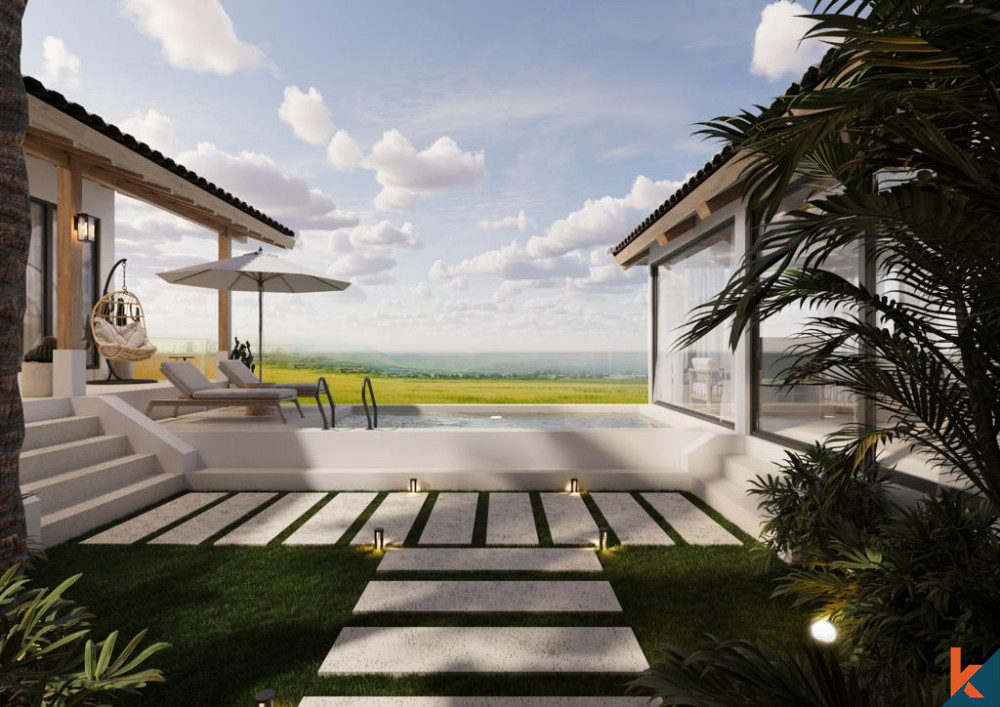In 2023, the Bali villas market continues to be a beacon in the global real estate landscape, offering a unique blend of traditional Balinese charm and modern luxury. This market, integral to Indonesia’s real estate industry, has adapted remarkably to the evolving global trends and the rising demand for exclusive, high-end accommodations. This article delves into the nuances of the Bali villas market, examining its driving forces, challenges, and the future trajectory it might take.

Market Drivers
Booming Tourism Industry
Bali’s enduring allure as a top-tier tourist destination remains a pivotal driver for the villa market. The island’s rich cultural tapestry, stunning natural landscapes, and hospitable climate draw a diverse array of visitors. From honeymooners seeking romantic getaways to luxury travelers looking for exclusive experiences, Bali caters to all, fueling the demand for high-end villa accommodations.
Investment Attractiveness
Increasingly, Bali is being recognized as a lucrative spot for investment in holiday homes and rental properties. The potential for high returns, especially in popular regions like Seminyak, Canggu, and Ubud, is a significant draw for investors. These areas are known for their vibrant nightlife, exquisite dining options, and picturesque settings, enhancing their appeal for property investments.
Remote Work and Digital Nomadism
The global shift towards remote work, catalyzed by the COVID-19 pandemic, has redefined the demand for villas. More individuals seek destinations that offer a blend of leisure and work-friendly environments. Bali’s villas, with their tranquil settings and modern amenities, are increasingly becoming the preferred choice for digital nomads and remote workers.
Bali’s Real Estate Market Challenges
Complex Regulatory Environment
Navigating the Indonesian property market can be challenging due to its intricate regulatory landscape. Restrictions on foreign ownership and fluctuating legal frameworks pose significant hurdles for international investors, requiring careful navigation and local expertise.
Environmental and Sustainability Issues
The ecological impact of real estate development in Bali is a growing concern. The island’s ecosystem is delicate, and the construction of new villas must prioritize sustainability to preserve Bali’s natural beauty. This involves not just adhering to environmental regulations but also embracing eco-friendly practices in construction and operations.
Market Saturation and Competition
Some regions in Bali are nearing saturation, with a high concentration of villas. This leads to fierce competition, particularly in the luxury sector, and can exert downward pressure on prices. It also raises concerns about the long-term sustainability of these areas as premier destinations.
Future Prospects
Exploring New Frontiers
To mitigate saturation, developers are venturing into less explored areas of Bali. These new locations offer fresh perspectives and experiences, potentially attracting a different segment of tourists and investors. This geographical diversification is vital for the sustained growth of Bali’s villa market.
Sustainability as a Priority
Sustainable and eco-friendly villa designs are gaining traction. Future developments are likely to incorporate green technologies, sustainable materials, and low-impact construction methods. This not only caters to the eco-conscious traveler but also aligns with global trends towards environmental responsibility.
Technological Advancements
The integration of technology is set to revolutionize the Bali villas market. Smart home features, digital concierge services, and state-of-the-art security systems are becoming standard in luxury properties, enhancing comfort and convenience for occupants.
Embracing Local Culture
There’s a rising trend towards integrating Balinese culture into villa designs and experiences. This includes using traditional architectural elements, featuring local art, and offering authentic Balinese culinary experiences. Such cultural integration not only enriches the tourist experience but also helps preserve and promote Bali’s heritage.
Targeted Marketing Strategies
Marketing strategies are becoming more sophisticated, targeting specific demographics such as wellness tourists, adventure seekers, or cultural explorers. This involves tailoring villa offerings to meet the unique needs and preferences of these groups, from providing yoga studios and wellness retreats to adventure sports facilities and cultural tours.
Partnerships and Collaborations
Collaborations between villa developers and local businesses or international brands can enhance the appeal of villa properties. These partnerships might include exclusive services, unique experiences, or co-branded marketing efforts, adding value to the villa offerings.
Conclusion
As we look towards the future, the Bali villas market in 2023 stands at an exciting juncture. It’s a market that seamlessly merges growth with sustainability and innovation with tradition. Its resilience and adaptability will be key to navigating the complexities of global trends and local dynamics. For investors, developers, and tourists alike, Bali’s villas represent a unique amalgamation of luxury, culture, and natural splendor, positioning it as a market brimming with potential and rich opportunities.


